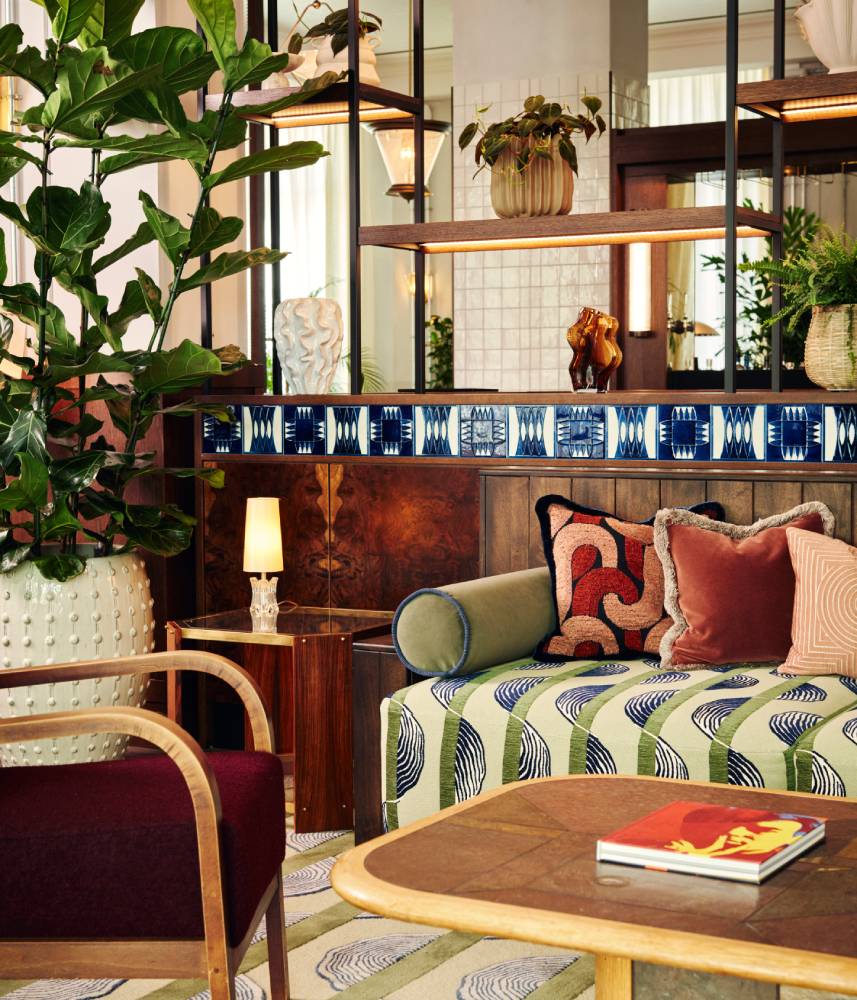The office: a history
From medieval monks to the invention of the internet, we chart workplace design across the decades and explore the future of our ever-evolving offices.
 office c. 1990s, via Smith Collection/Gado/Getty Images
office c. 1990s, via Smith Collection/Gado/Getty Images
Despite the term ‘working from home’ seeming to dominate our vocabulary since 2020, it’s easy to forget that the concept itself is nothing new. In fact, the act of working from home has been around a lot longer than the brick-and-mortar office, which has seen many different iterations since its invention. As the office continues to evolve as both a physical space and as a social concept, we take a deep dive into the building where the average Brit spends over 3,500 days (or 90,000 hours) of their life.
Home: the original office
Due to low literacy rates throughout ancient history, the medieval period and even into the industrial revolution, for most of the population, ‘going to work’ entailed a day of manual labour and skilled craftsmanship. However, a growing need for bookkeeping and clerical work afforded the educated few in society (as well as creatives such as the poets and playwrights) the luxury of working at a desk. This would typically take place at a writing desk in the home, which later migrated to the owner’s residence above a business or shop, where an employee base would gradually grow – still keeping work attached to the home, with clerks also boarding at the residence.
 Monks Scriptorium, woodcut painting
Monks Scriptorium, woodcut painting
The evolution of the workplace
The first record we have of a designated workspace outside of the home dates to the 15th century, when medieval monks designed the ‘scriptorium’. This was created to provide monks with a solitary, focused space for copying manuscripts, with the Latin name literally translating to ‘a place for writing’. The scriptorium – which consisted of a single-seat desk with built-in shelving to store parchment – was first depicted in a painting by Italian artist Sandro Botticelli in 1494 and is arguably the earliest form of the often-maligned office cubicles that dominated most contemporary workplaces towards the end of the 20th century.
Most administrative work throughout the following years was still seen as a solitary endeavour, until almost 250 years later when The Old Admiralty Office in London opened its doors in 1726. Believed to be the first purpose-built office for communal work, the building is now more commonly known as The Ripley Office after its ‘Master Carpenter’ designer, Thomas Ripley. This was closely followed by the opening of East India House in 1729, a vast headquarters created to manage the slew of paperwork and bureaucracy behind Britain’s East India Company.
 Taylorism office layout, c. 1910
Taylorism office layout, c. 1910
From the 19th century onwards, new inventions in technology continued to transform the way we worked, demonstrating just how closely both the physical space of the office and our approach to work is tied to cultural and technological advancements. The invention of the lightbulb meant that work could continue later into the day, while telegrams and telephones revolutionised the way we communicated. The invention of the typewriter was also hugely influential in bringing women into the office, many of whom would leave the home to start their careers in the typing pool and receptionist positions and later advance to executive roles. And, of course, the birth of the internet on the 1st of January 1983 changed everything – including the way we work, charting the advent of fax machines, email and eventually the Zoom meeting.
 Douglas Engelbart using hmrc workstation, 1968
Douglas Engelbart using hmrc workstation, 1968
 IBM typewriter via Getty images
IBM typewriter via Getty images
The office as we know it
Over the course of the 20th century, the close-knit rows of desks resembling factory workbenches eventually gave way to more comfortable, spacious layouts, helped largely by the Bürolandschaft movement. Founded by German brothers Eberhard and Wolfgang Schnelle, the brothers’ approach turned conventional European office design on its head, replacing the orthodoxy of a rigid maze of regimented desks with open-plan layouts and a more human-centred, egalitarian approach.
 Halifax Building Society HQ, 1974
Halifax Building Society HQ, 1974
 HALIFAX BUILDING SOCIETY 1974, courtesy of BDP
HALIFAX BUILDING SOCIETY 1974, courtesy of BDP
Continuing this movement, Herman Miller released its landmark Action Office in 1964, designed by American inventor Robert Propst. This moveable system of desks and walls offered employees more comfort and privacy, prompting the mass production of smaller, lighter versions and ultimately ushering in the age of the office cubicle. These modular cubes have since become synonymous with grey, monolithic office blocks of the 1980s and 90s, and for many have come to symbolise siloed working and a decline in staff morale.
 Herman Miller's Action Office 2 at Braniff International Dallas, 1976
Herman Miller's Action Office 2 at Braniff International Dallas, 1976
Tomorrow’s workplace
As we start to move away from stereotypical images of the ‘glass box’ office, lined with the obligatory grey cubicles, workplace design has advanced in leaps and bounds even in the last decade. Flexible, open-plan layouts encouraging collaboration have become the norm, with designers and architects shunning siloed desks and windowless boxes in favour of bright, colourful and multi-purpose workspaces.
Along with sustainability, employee wellbeing and staff satisfaction are becoming non-negotiables more than ever before, in an increasingly competitive market where employees must be tempted from the comfort of their own homes and back to their desks. And in an age where your office is wherever you open your laptop, the workplace of tomorrow remains a moving target as we navigate the latest office frontier: hybrid working.

